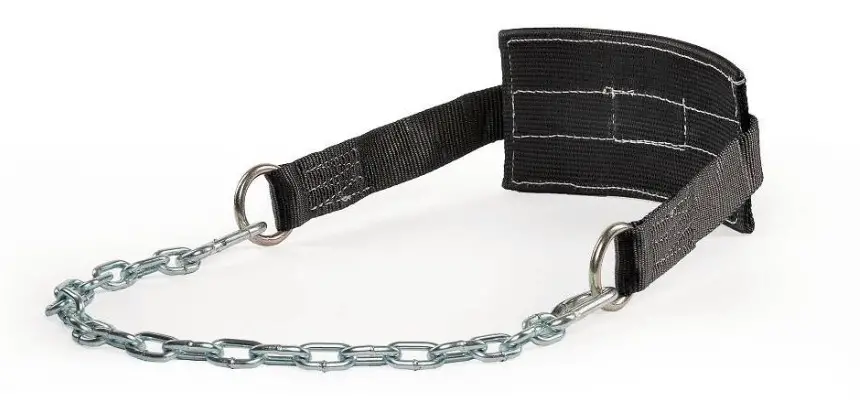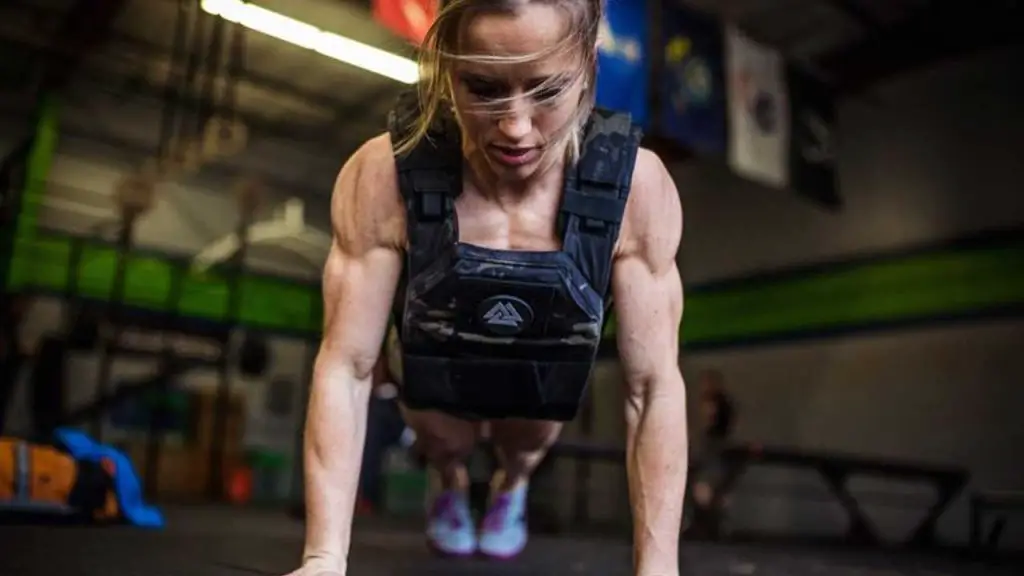How to Use a Dip Belt with Chain: Unleash Your Inner Beast

ListedFit is reader-supported. When you buy through links on our site, we may earn a small commission.
When it comes to strength training and building muscle, using a dip belt with chain can be a highly effective tool. Designed to help you perform dips and other exercises, a dip belt allows you to add weight to your body, increasing the resistance and intensity of your workouts.
In this article, we’ll guide you through the process of using a dip belt with a chain, so you can get the most out of your exercise routine.
Quick Summary

Dip belts are an essential piece of gym equipment for those looking to increase the intensity of their bodyweight exercises.
By adding extra weight for exercises like dips and pull-ups, you can continue to challenge your muscles and promote growth.
The right dip belt can help you build bigger, stronger muscles while maintaining proper form and reducing the risk of injury.
Regardless of the type of dip belt you choose, knowing how to properly utilise dip belts will help you get the most out of your training and achieve your fitness goals.
Key Takeaways
- Dip belts can enhance the intensity of bodyweight exercises by adding extra weight.
- Be aware of the different materials and designs of dip belts to find the ideal one for your needs.
- Proper use of a dip belt is crucial for maximising benefits and minimising injury risk.
Table of Contents
What Is a Dip Belt with Chain

A dip belt with a chain is a piece of fitness equipment designed to add resistance to your bodyweight or calisthenic exercises, such as dips and pull-ups. It usually consists of a strap that wraps around your waist, with a chain or rope attached to the front.
The other end of the chain or rope is meant to be attached to weight plates, which help increase the intensity of your workout.
Using a dip belt is actually quite simple.
- First, unclip the chain and wrap the belt around your waist.
- Let the chain hang down, then guide it through a weight plate and fasten it back to the belt.
You can use various types of weights, such as plates, dumbbells, or kettlebells, depending on your preference.
With additional resistance, your muscles are challenged more than they would be during regular bodyweight exercises.
This additional resistance provided by a dip belt with chain can lead to increased muscle mass and strength, and more effective workouts.
Different Types of Weight-Carrying Dip Belts
Dip belts are designed to wrap around your lower torso and have a component (either a chain or strap) around the front to attach your desired weight. They are made from various materials such as leather, neoprene, nylon, and fabric, each with its own set of benefits and drawbacks.
Leather dip belts offer durability and support, but may be less flexible and comfortable than other materials. They are more suitable for experienced lifters who are handling heavier weights.
Neoprene dip belts provide more cushioning for the back and are more lightweight, making them a good option for beginners or lifters who prioritise comfort. But they might not be as durable as leather or nylon.
Nylon is a popular choice for dip belts due to its combination of durability, flexibility, and comfort. They are also relatively more affordable compared to other options.
Fabric dip belts are less common mainly due to the max weight they can hold, they are usually made from a combination of cotton, nylon, and neoprene, and are more flexible than leather belts, allowing for a snug, conforming fit. This type of dip belt is ideal for those who are new to using dip belts or won’t be lifting over 43kg/95 lbs with it.
Types of Dip Belts
There are various types of dip belts available to suit your needs and preferences. It’s important to consider your goals and activities when choosing a dip belt to ensure it meets your requirements.
- Standard Dip Belts: These are designed for simple dip and chin-up exercises, using bodyweight only or with added weight attached via a chain or strap. They are suitable for most users and come in different materials, as mentioned earlier.
- Weighted Vest Dip Belts: These dip belts look like a vest and have pockets where you can add or remove weights according to your needs. They are ideal for those who want to distribute the added weight more evenly across their body during exercises.
- Hip Belt Squat Dip Belts: Specifically designed for hip belt squats, these belts are suitable for those who want to focus on their leg and glute strength without putting too much strain on their spine.
How to Choose the Right Dip Belt
First, comfort is crucial when using a dip belt in your workouts. You want to ensure that the belt fits snugly around your waist without causing any discomfort or irritation. There are different materials available, such as fabric or leather which cater to different preferences.
Fabric dip belts are more flexible than leather ones, offering a snug, conformed fit and are usually made from a combination of cotton, nylon, and neoprene. On the other hand, leather belts offer more rigidity and additional support.
Next, the durability of the dip belt should be taken into consideration. Ensure that the belt’s material can withstand heavy lifting.
How much weight do you plan to lift with the belt? Check the stitching quality, the chain, and how the buckle fastens as well to determine if it will last long during regular use.
Price is another important aspect of choosing a dip belt. You want to find a belt that provides excellent value for your money. While there are cheaper options available, you might want to invest in a higher-priced belt if it offers better comfort, durability, and support – key factors in ensuring long-term, satisfying use.
If you’re shopping for your first dip belt or if you plan on sharing it, a one-size-fits-all option might be suitable. Adjustable dip belts are more user-friendly and cater to a wider range of waist sizes but keep in mind, comfort and fit are still essential factors.
I personally prefer to use a dip belt with padded support. I currently use a leather belt which has neoprene lining. A bit of padding helps distribute the weight evenly during my dip exercises and makes them more comfortable so the weight isn’t as much of a distraction.
What Are Some Ideal Exercises for Dip Belts
Dip belts are an invaluable piece of gym equipment, allowing you to add weight and resistance to your bodyweight exercises, helping build strength and muscle.
Weighted Dips
Weighted dips are a great way to strengthen your chest, shoulders, and triceps. To perform this exercise:
- Wrap the dip belt around your waist and attach the chain to the desired weight plate with a carabiner.
- Stand between parallel bars or a dip station and grasp the bars with your hands.
- Lift your feet off the ground, stabilising your upper body.
- Lower your body until your elbows are bent at a 90-degree angle.
- Push back up to the starting position, focusing on using your chest, shoulders, and triceps muscles.
Aim for a range of motion that feels comfortable and controlled, gradually increasing the weight as your strength improves.
Pull-Ups and Chin-Ups
Pull-ups and chin-ups are effective exercises to target your upper back and bicep muscles.
To do pull-ups and chin-ups with a dip belt follow this guide:
- Fasten the belt around your waist, attaching the chain to a weight plate using a carabiner.
- For pull-ups, use a pronated (overhand) grip on a pull-up bar; for chin-ups, use a supinated (underhand) grip.
- Hang from the bar with your arms fully extended and feet off the ground.
- Pull your body up until your chin passes the bar, keeping your core tight and engaged.
- Lower yourself slowly, maintaining control throughout the movement.
Repeat for the desired number of reps, ensuring your form remains consistent even as you fatigue.
Belt Squats
Belt squats are an alternative to traditional squats, offering similar benefits while placing less stress on your spine.
To perform a belt squat:
- Attach a weight plate to the dap belt using the chain and a carabiner.
- Step onto a raised platform or two sturdy boxes, positioning them shoulder-width apart.
- With the belt around your waist, stand with your feet shoulder-width apart.
- Maintain an upright posture as you lower into a squat, keeping your knees in line with your toes.
- Push through your heels to return to the starting position.
Adjust the weight as needed, focusing on maintaining proper form and technique throughout the exercise.
Calf Raises
Weighted calf raises help strengthen your calf muscles, improving stability and balance.
To perform this exercise with a dip belt:
- Wrap the belt around your waist and attach a weight plate with a carabiner.
- Stand with the balls of your feet on a raised surface (such as a block or step) and your heels hanging off the edge.
- Slowly lower your heels towards the ground, feeling a stretch in your calf muscles.
- Push back up onto the balls of your feet, contracting your calves at the top of the movement.
Perform the desired number of reps with the added resistance of the dip belt, adjusting the weight as your strength increases.
Proper Use of Dip Belts
Preparing the Dip Belt
To prepare the dip belt for use, first, wrap the belt around your waist and adjust the cinch for a snug fit. Ensure it sits comfortably on your hips, avoiding any pressure on your spine. Next, attach the steel chain to the D-rings or loops on each side of the belt. Hook the chain to the desired weight, making sure it’s secure.
Safety and Injury Prevention
Using a dip belt safely and effectively is essential for preventing injuries and ensuring optimal performance. Here are a few tips to keep in mind:
- Warm-up: Before using the dip belt, spend some time warming up your upper body to improve joint mobility and reduce the risk of injury.
- Proper form: Ensure you maintain proper form throughout the exercise, engaging your core and keeping your spine neutral to avoid unnecessary pressure on your joints.
- Secure attachment: Always check that the belt is snug around your waist, and the weight is attached securely to the chain. Misaligned weights can lead to injuries and imbalances.
Common Mistakes to Avoid When Using a Dip Belt
It is also essential to avoid common mistakes when using a dip belt:
- Jumping down: When dismounting from the pull-up or dip, don’t jump down at the end of the set as you would if you didn’t have a belt on.
This will not only put strain on your lower back and hip joints, but it can also put extra stress on the chain and stitching of the belt.
The belt is reinforced to carry weight, but it isn’t designed to carry weight with momentum.
Doing this too much weakens the material stitching holding the chain and can lead to breakages where the weight plates could fall on your toes. - Improper weight attachment: Ensure that the weight plate is not too loose or too tight on the chain, as this could cause it to detach during your workout.
You can use plates, dumbbells, or kettlebells with the dip belt, but make sure they’re securely fastened before starting the exercise. - Poor body alignment: Maintain a straight, upright posture during the exercise, avoiding leaning forward or backwards.
Not doing this can put too much stress on your joints and cause injury. - Ignoring pain: Pay attention to any pain while using the dip belt. If you experience pain, stop the exercise, and assess your form, positioning, and weight load.
Dip Belt Vs Weighted Vest

Dip belts with chains offer customization of the added weight.
Unlike weighted vests, which either come with a fixed amount of additional weight or aren’t plate loading, dip belts allow you to quickly and conveniently adjust the load and the versatility of being able to use weight plates, dumbbells or kettlebells.
This flexibility makes it easier for you to tailor your workout to your specific needs and progress at your own pace.
I personally prefer dip belts over weighted vests because a dip belt with chain basically allows more weight to be carried.
Conclusion
By now, you should have a clear understanding of how to use a dip belt with chain effectively for increasing strength and muscle gains. The key is to ensure the belt is comfortably fitted around your waist, and the weight plate is securely attached to the chain
Remember to start with lower weights and gradually progress, allowing your body to adapt to the increased resistance. Integrating dip belt exercises into your workout routines, like weighted dips, pull-ups, and chin-ups, can significantly enhance your upper body strength and muscular development.
Always prioritize proper form and technique when performing exercises with a dip belt. This ensures not only maximum gains but also reduces the risk of injuries.
Incorporating a dip belt in your workouts is an excellent way to diversify your training routine and break through plateaus. So, go ahead and harness the power of this versatile piece of equipment to achieve your fitness goals.
Frequently Asked Questions
How to properly wear a dip belt?
To wear a dip belt correctly, first, unbuckle the belt and adjust its length for a comfortable fit around your waist.
Once adjusted, fasten the buckle securely and ensure the chain is attached to the belt’s loops. Attach the desired weight to the chain, allowing it to hang in front of or behind you.
Make sure the belt is snug against your body but not too tight to restrict movement.
Which exercises can be performed with a dip belt?
A variety of exercises can be performed with a dip belt, including:
* Weighted dips: For triceps, chest, and shoulders.
* Weighted chin-ups or pull-ups: For upper back and biceps.
* Belt squats: For lower body strength, especially the quadriceps.
* Weighted donkey calf raises: For calf muscles.
These exercises are effective for increasing muscle strength and size.
What are the benefits of using a dip belt?
Using a dip belt provides several benefits:
* Increases resistance for bodyweight exercises, allowing for more challenging workouts.
* Targets and strengthens specific muscle groups.
* Improves performance in compound movements such as bench press or push-ups.
* Allows for a greater range of motion in exercises like dips and chin-ups.
* Adds versatility to your workout routine, allowing for faster progress.
How to choose the right dip belt size?
When choosing a dip belt size, consider the following factors:
Width: Wider belts provide better support, while narrower belts allow for more freedom of movement.
Length: The belt should comfortably wrap around your waist and accommodate the desired weight.
Material: Fabric dip belts are more flexible and suitable for lighter loads, while leather belts are sturdier and can handle heavier weights.
Choose a belt size that fits your body and training goals while ensuring comfort and safety.
What is the difference between a dip belt and a weightlifting belt?
A dip belt is designed to add resistance to bodyweight exercises like dips and chin-ups by suspending weight plates from a chain.
A weightlifting belt, on the other hand, supports the lower back during heavy lifts like squats or deadlifts by providing compression and stability.
Although both belts are used in strength training, their purposes and applications are different.
When should I incorporate a dip belt into my workout routine?
Incorporate a dip belt into your workout routine when you can comfortably perform 10 or more repetitions of bodyweight dips or chin-ups.
Adding weight to these exercises will challenge your muscles more effectively, promoting growth and strength gains.
Always make sure to use proper form and start with lighter weights, gradually increasing the load as you become stronger.
Author
- Danny Loeb is a qualified Personal Trainer, Fitness Model and Writer. He enjoys blogging about health and fitness, messing around with Photoshop, and sharing his experiences with everyone.
Latest entries
 NutritionFebruary 6, 2024What Are Fillers in Supplements? – Unveiling Inactive Ingredients
NutritionFebruary 6, 2024What Are Fillers in Supplements? – Unveiling Inactive Ingredients FitnessAugust 23, 2023Best Post-Workout Foods: Great Ideas for Recovery and Results
FitnessAugust 23, 2023Best Post-Workout Foods: Great Ideas for Recovery and Results BulkingJuly 26, 2023Is Rice Good for Bulking? Unveiling the Truth
BulkingJuly 26, 2023Is Rice Good for Bulking? Unveiling the Truth CultureJuly 15, 2023Why Do People Hate Planet Fitness? Read This Before You Join!
CultureJuly 15, 2023Why Do People Hate Planet Fitness? Read This Before You Join!
Affiliates:
This post may contain affiliate links that at no additional cost to you, the site may earn a small commission. We only recommend products we would use ourselves and all opinions expressed on this site are our own.
General Advice:
The information provided in this article is for general informational purposes only. It is not intended as a substitute for professional advice. Always consult with a qualified healthcare professional before starting any new diet, exercise program, or making changes to your health routine.
Accuracy Advice:
While we strive to provide up-to-date and accurate information, the content in this article may not reflect the most current research or medical guidelines. We encourage readers to do further research and consult with professionals for more personalized advice.
Our Recommendations:
The products and services mentioned in any of our articles are recommended based on our independent research and personal experience. We are not sponsored by any company. We aim to suggest products and services we believe are of high quality and could be beneficial to our readers.






